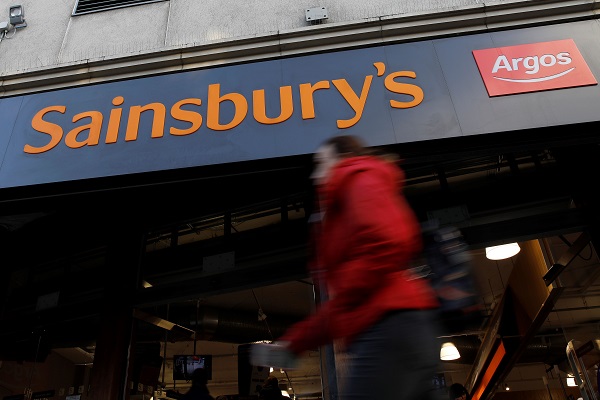Sainsbury's on track to make over £1bn this year
After a positive response to these results, the grocer's share price remains close to an 11-year high. ii's head of markets runs through the figures.
6th November 2025 08:31
by Richard Hunter from interactive investor

Sainsbury (J) (LSE:SBRY) value proposition is clearly paying dividends, with Grocery continuing at the vanguard of its sturdy progress.
- Our Services: SIPP Account | Stocks & Shares ISA | See all Investment Accounts
The lack of a material upgrade to the full-year profit estimate may be a source of disappointment, with the group simply stating a figure of “more than” £1 billion without clarification, compared with "around" £1 billion in July, while applying the same incremental increase to an expected free cash flow of £500 million.
In contrast, the disposal of Sainsbury’s Bank to NatWest has resulted in higher proceeds than expected. The £400 million will be returned to shareholders through a special dividend of £250 million (which will lift the yield to a punchy, if temporary 7.4%) with the balance of £150 million split between £50 million being added to the existing share buyback programme and £100 million to the fresh exercise next year.
The headline numbers continue to grind higher, which should help support what has been a decent run for the share price in recent times. Group revenues of £17.58 billion for the 28 weeks ended 13 September represented an increase of 2.8% from the corresponding period, and underlying profit of £340 million was 10% higher and marginally ahead of estimates. Underneath these figures, retail sales of £15.38 billion were the core contributor and rose by 4.8%, with a basically flat underlying profit figure of £504 million ahead of the expected £485 million.
Grocery remains the star of the show, with sales increasing by 5.3% as the likes of the group’s Aldi Price Match and Your Nectar Prices proving popular. The Taste the Difference range also continues to fire ahead, with the group adding around 300 more products to the range over the summer. With customers searching for perceived and actual value, the availability of the group’s Nectar scheme is also playing its part in increasing Sainsbury’s market share. Indeed, the company estimates that over a three year period Nectar will provide incremental profit of £100 million. The group is already ahead of plan with the target, which would be a significant bonus given the ferocity of competition which the sector attracts.
Elsewhere, General Merchandise (GM) and Clothing sales grew by 3.3%, held back slightly by the GM performance where reduced space allocation in stores and reduced consumer discretionary spending made an impact, but where improved ranges and availability fed through to a strong clothing showing.
Argos remains a work in progress after some years in the doldrums on reduced discretionary spend. There are some glimmers of hope emerging as profitability is improving and with sales increasing by 2.3% in the period. With 80% of sales now undertaken online, the brand may find itself well-positioned for the impending Black Friday event, as well as the imminent festive season.
By channel, Sainsbury's is also reaping the benefit of its varied offering which provides a wide choice for customers. The group is continuing to invest in new stores and to revamp existing ones, while the convenience and online channels are still proving attractive to customers, with sales growth of 5.2% and 11.4% respectively in the period.
Of course, the environment provides challenges and the way ahead is not plain sailing. Higher employment costs and food inflation are constant threats to the sector as a whole and it remains to be seen how punishing the upcoming Budget may prove to be for households. The probability of an all-out price war between the supermarkets appears to have receded, although keen pricing remains a staple in this business.
- How we build a defensive buffer and three new buys in 2025
- Sign up to our free newsletter for investment ideas, latest news and award-winning analysis
Sainsbury's has also been able to add to its overall market share which at the last count was 15.3%, sandwiched between Asda at 11.8% and 28.3% at Tesco, the clear market leader by some distance. Its share price has seen the benefit of its dogged progress, having risen by 27% over the last year, as compared to a gain of 19.7% for the wider FTSE100, taking the cumulative three year rise to 62% which leaves its valuation in line with the historical average.
As such, and with Tesco comfortably remaining the preferred play in the sector, the market consensus of the shares as a hold will most likely stay intact. Even so, investors will have appreciated the total recent return both in terms of the share price as well as the attractive additional dividends.
These articles are provided for information purposes only. Occasionally, an opinion about whether to buy or sell a specific investment may be provided by third parties. The content is not intended to be a personal recommendation to buy or sell any financial instrument or product, or to adopt any investment strategy as it is not provided based on an assessment of your investing knowledge and experience, your financial situation or your investment objectives. The value of your investments, and the income derived from them, may go down as well as up. You may not get back all the money that you invest. The investments referred to in this article may not be suitable for all investors, and if in doubt, an investor should seek advice from a qualified investment adviser.
Full performance can be found on the company or index summary page on the interactive investor website. Simply click on the company's or index name highlighted in the article.